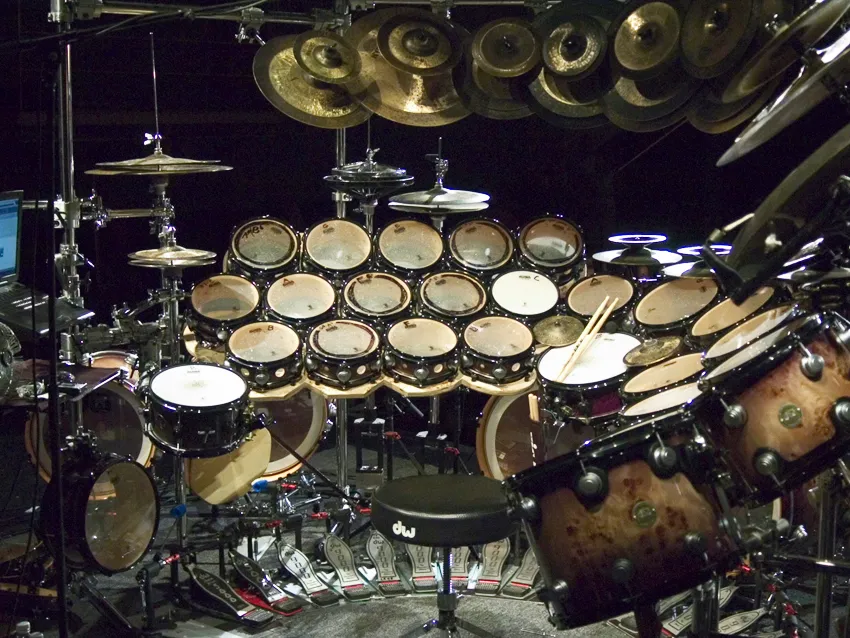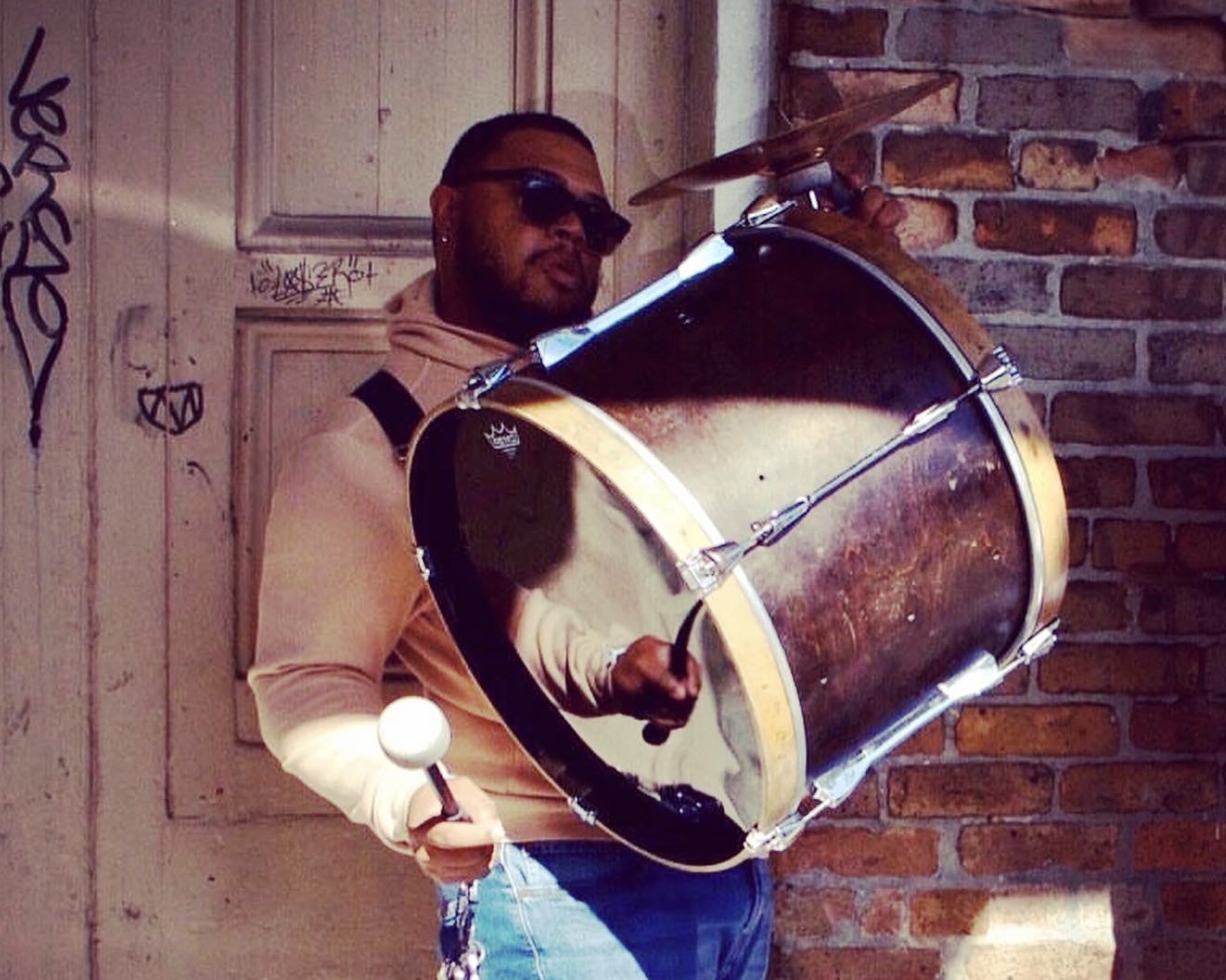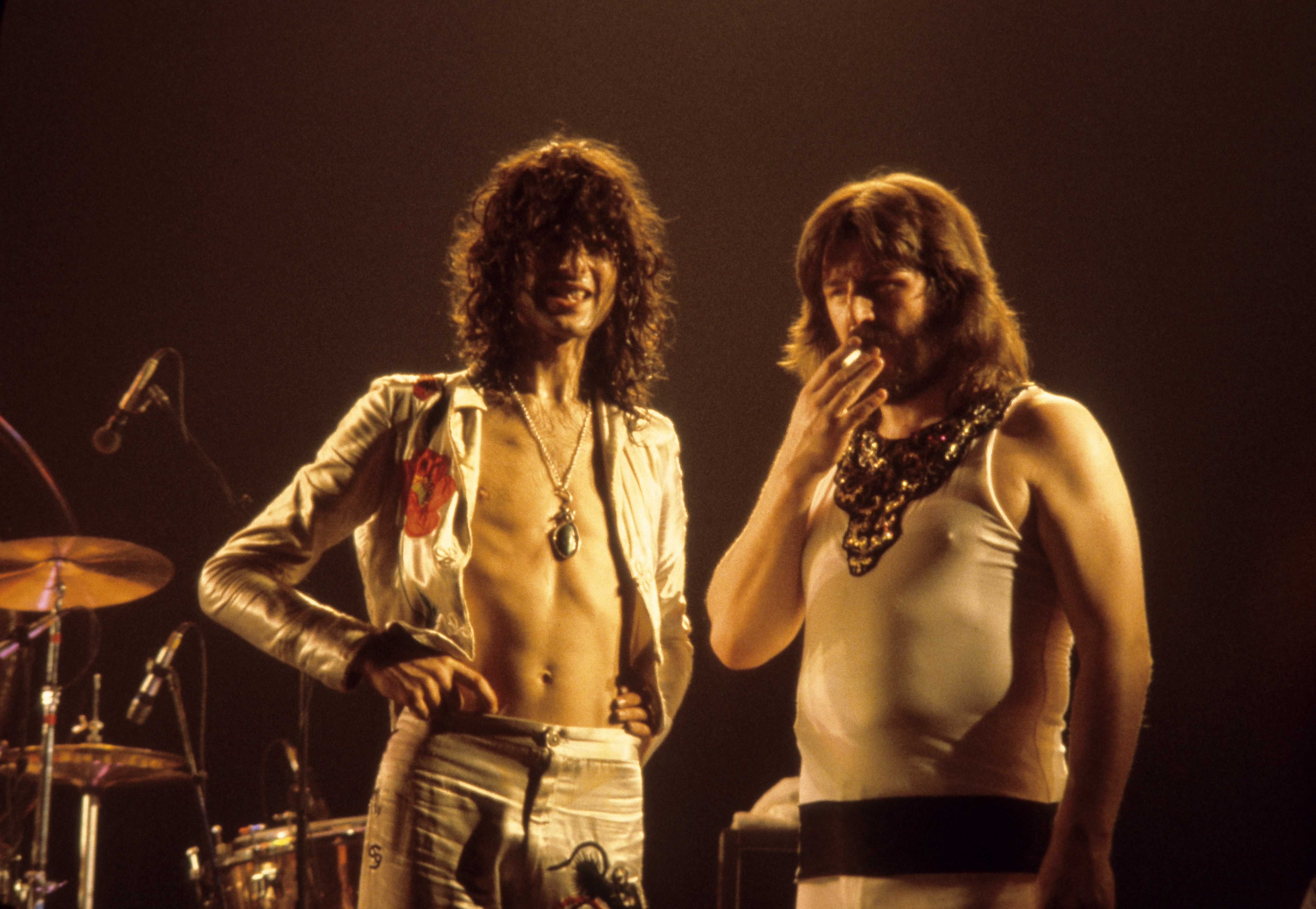Dave Hingerty
’50 Ways to Treat Your Drummer’
April 13, 2024
Songwriters! Producers! These are my tips on how to get the best out of drummers in a session and construct great rhythms together.
*This is also for anyone interested in drums, drummers, or drumming but were too afraid to ask!
Intro/Count in
I’ve had dozens of songwriting students come to tutorials with me asking “How do I understand more about drumming or... how do I talk to drummers about getting the approach I want?” Drummers can be protective about their instrument and might not like the idea of you telling them/ asking them to play something specific. Especially if you haven’t a clue about drums. They might not want you to play their drums, but, like me, they will probably see the benefit of collaboration in time.
For example, I remember Glen Hansard sitting at my drum kit many years ago and he asked could he try an idea for the song… he was doing this unorthodox untrained rhythmic idea. I was bristling with entitlement and didn’t want him near the kit. ‘Fuck off’, I thought, while smiling politely. ‘ I don’t tell you what to sing’. But it was actually a very good idea. I learned from that, and all these years later, I do actually encourage rhythmic ideas from others. To a point!

‘I’ll tell you what Jimi, you change the lyrics in Purple Haze to ‘kiss this guy’ ok?’
First of all, know the anatomy of a drum set….its simple
Most rhythms are developed from the ‘Holy Trinity’ of the drum kit…the hi hats (Mary), the snare (Jesus) and the bass drum (Joseph). Of course there are also normally toms ( mounted toms and floor tom) and cymbals ( 'ride' for rhythms and crashes for accents) to work with. These are the Apostles.
Kits can come in all shapes and sizes of course. There are 3 tones on the drum set like most instruments; low, mid and high, and we drummers usually aim to balance these and provide a strong straight pulse on one of the voices and maybe provide some syncopation ( off beat) on another voice or 2 simultaneously. That’s it.

Not much has changed…Early ‘Traps’ ( contraptions) kits circa 1915 featured the ‘Holy Trinity’. Note the ‘hi hat’ isn’t very high. Called the ’Sock Hat’ in those days.
10 topics to raise in a session with a drummer.
A. Talk about the sound of the drums. Do you want the drummer to make the drums dampened, or open and ringy? Dry and short, or deep, wet and flabby (now now!). I once used a telephone book to dampen and 'thicken' the snare drum sound for a Frames recording (thanks, Dave Odlum). We were looking for Neil Sound 'Harvest' sound. I also remember playing hi- hats with a long matchstick instead of a stick for a Nina Hynes album track. So, do you need a certain sound, a special tuning, high or low, or for the drum to be in key with the song? Would you prefer the drums to be vintage, i.e., warm and rattly, (and with ‘no manners’- thanks Paul Cantwell)? Or do you like a more modern drum sound ( less character, more dependable)? Like an accountant.
B. What stick/brush type to use ? Also consider using Mallets/hands? This is about texture. The sound acoustics and balance in the room could be a factor here.
*********
The Pattern itself…..
C. Should the lead hand pattern, for example, be playing half the normal (1/4 notes), the normal ( quavers or 1/8th notes), or double the normal amount of beats (1/16th notes). Or indeed a mixture of these so called ‘subdivisions’! This can affect momentum and feel. And should this lead pattern be played on Hi Hats , Ride Cymbal, Floor tom, Tom rim… or on a fire extinguisher? (Yes, Wayne Sheehy!)
D. Then, where do you want the back beat in the rhythm ( the position in the beat that you hit the snare drum), if any.
E. With that, should the bass drum pattern be? A straight pulse like Techno or Disco ( ‘four to the floor’), or more syncopated (‘off beat’) or irregular. Should the bass guitar and bass drum have similar movement?
**********
F. Should the feel be loose, greasy and swingy? Or more mechanical, stiff and robot like? Or should it be wild and feel like its charging forward! “Imagine you’re 14 and you’ve just drunk 10 cans of coke”, said one famous singer to me once.
G. Talk about the dynamic approach to the song… Should it be loud or quiet or both? I played a song with The Frames called “God Bless Mom’ that had 8 different dynamics. Now that was a challenge!
H. Do you want lots of ‘fills’ to link the song parts, or none?

“Can’t I do just one little fill? Pleeease??”
I. Should there be a change of approach/rhythmic design for each section in the drumming arrangement? Are you looking for an uninterrupted hypnotic pulse or something more dramatic in its changes? Call/response, maybe ? Tension/release within sections or between sections?
J. What style of drumming is it like, broadly speaking? To reference this, or a song with specific drumming, you will likely help the drummer.
See Below.
10 examples of drumming Styles to reference.

Boom, Boom! He’s got the voodoo...(yes that is a screwdriver in his left hand!). Photo-Dave Hingerty
1. New Orleans is loose, ‘greasy’ and conversational…it’s based on a marching rhythm originally with all notes played on the snare with ringy ping accents on the edge with a kind of accompanying bass drum pattern that lands away from the snare accents. Expect- Voodoo magic
2. Drum n bass. Fast (160-180 bpm) tight, machine like rhythms but with extra ‘ghost notes’ ( very lightly played snare off-beats), ‘buzz’ notes and snare ‘back beat’ variations. The design is inspired by the James Brown drumming style but faster and more intense. Expect- baldness
3. Reggae/ Ska - Here, the bass drum often leans heavily on the ‘3’ beat ( ‘one drop’), which is very unusual and the accents on the hi hat ( and the guitar/keyboards) are on the ‘skank’, ie, the count of 2 and 4. Expect- a funny smell in the room like a randy skunk
4. Jazzy - This can be either ‘traditional’ which played with the bass drum on all 4 beats and is ‘feathered’( played very lightly). Or ‘Be bop’ jazz drumming started in 1952 arguably with Kenny Clarke, who used to ‘drop the bomb ‘ with new syncopated bass drum beats. This started a much freer approach to drumming, loosely following the melody, and improvising til the cows come home. Expect- tweed or a tobacco pipe
5. Blues- This can be shuffle blues rock style where the first and third triplet are the dominant pulse with the lead hand . Much slower, simpler and older is the 12/8 type blues which puts a snare backbeat on the 4th &10th beats. Expect- to feel sad.
6. Prog rock drumming can often embrace odd time signatures ( ie not the ‘common time’ 4 beats to the bar) and can be cerebral or mathematical and is the antithesis of Punk. Expect- dirty looks if you make a mistake
7. Punk was the reaction to the stuffy eccentricism of prog rock in the 70’s and is very unsubtle, simple, direct, and full of raw energy. It is brash and angry with an unsophisticated sound, almost in order to provoke. Expect- A kick in the knackers
8. Latin and Cuban rhythms. These grooves are mostly based upon the ancient African ‘clave’ ( weird syncopated pulse like the ‘Bo Diddley’) . There is huge variation in these rhythms and they are mostly built up of 3 or 4 syncopated rhythms that somehow only make sense when played together, emulating percussion ensembles. A very ‘melodic’ complex drumming style. Expect- musicians actually smiling while they play
9. Heavy metal. There are so many metal music types but overall these drummers tend to be athletic and hard hitting with a heavy emphasis on double bass drum patterns. Expect- Body Odour and lovely hair
10. Country. Simple , light, unchanging….maybe with brushes. The 2/4 Johnny Cash 'train beat' might serve you well ! Expect- Western aswell
10 ways to design rhythms effectively
Part 1- Rhythmic improvement (no drum kit needed)
1. Rudiments- Start with ‘single strokes’ ( right -left -right -left etc consecutively ) at different tempos, or ‘BPM’s. Then slowly get faster ? What?
2. Slow down again, and add accents on both sides, left or right, randomly or sequentially.
3. Try these with a steady bass drum pulse or tapping your foot. ‘Ostinato’ ( repeated pattern) is the word you need here.
4. Change the ‘sticking’ eg RRLL (or RLRR,LRLL the famous paradiddle!), but with the same bass drum pattern.
5. Use rests, or gaps, in the pattern. Yes, I do mean not playing, God forbid.
Part 2- Beat Design ( drum kit needed)
6. Play a simple 4/4 (or 6/8) rhythm with one hand playing 1/8th notes on the hi hat and the other hand playing 'backbeats' on the snare and…
7. Add a bass drum (or a few) in different places and get used to now playing different things with 3 limbs all at the same time (‘independence’). Like tapping your head, and rubbing your belly, and dancing to Kajagoogoo, all at the same time!
8. Move your hands to different parts of the drum kit (or to the cat's head. Joking , I actually like cats. Or Do I?) to change mainly the ‘voicing’ (‘orchestration’) but with the same rhythm.
9. Change the subdivisional approach ( twice as many, three times as many, or four times as many notes, but in the same tempo). eg. 'Louth, Dun-dalk, Mon-ag-han, Tub-er-cur-ry; 'Louth, Dun-dalk, Mon-ag-han, Tub-er-cur-ry;
10. Add accents on any of the notes in the pattern. This will make a more interesting shape in the rhythm and make you think that you are an actual professional drummer !
10 very different drummers with a unique sound or approach to possibly reference.
Have a listen to ……

Bonzo….Has a black belt in drumming. Photo-George De Sota//Getty Images
1. Steve Gadd ( marching/latin/linear grooves). * Warning-has a cowbell
2. John Bonham ( power with swing, but slightly behind the beat) *Warning- Talks while he’s playing
3. Stewart Copeland ( using reggae and conga drum elements in punky/new wave style patterns) * Warning- doesn’t seem to like singers
4. Ringo Starr ( a very orchestral drummer) . * Warning- doesn’t know if he’s left or right handed yet.
5. Tony Allen ( light and hypnotic, African, use of clave within funk) . * Warning- He says he isn’t one of Fela Kuti’s 33 children.
6. Richard Spaven ( jazz, glitch, and drum n bass ) * Warning- Thinks drums are difficult to play-ha ha!
7. Jim Keltner ( singer-songwriter drum master with great half time groove feel and ‘second line’ kit sounds). * Warning- Has a moustache even though it’s not November.
8. Levon Helm ( singing drummer, very musical, very 'tasty', behind the beat). * Warning- Has a mandolin and will use it!
9. Moe Tucker ( raw, minimal heartbeat- like rhythms, pre punk lady) * Warning- doesn’t do paradiddles
10. Danny Carey ( mathematician of prog rock polyrhythms and odd times) * Warning- Doesn’t not do paradiddles. Never played a simple 4/4 in his life. Worries he’ll die if he does.

Excuse me Moe, but that’s not where you are supposed to put the bass drum. And, anyway, they’re not matching sticks. Ah well, rules are for fools.
10 things to watch out for in a drummer.
1. They can often grunt, squeal like a pig, or drool while drumming.
2. They always have a food stash in tin foil, sometimes a week old. Kedgeree in Tupperware may also be found on their person.
3. They don’t like when the singer says ‘my drummer’.
4. They don’t like always getting blamed for the band’s timing fluctuations. They're the ones who practice to a metronome don't forget!
5. They do terrible solo albums.
6. They argue with singers a lot.
7. They’re not necessarily the thickest in the band. ‘Did you hear about the drummer who locked his keys in his car? It took an hour to get the bass player out!’ Ba-Dum-Tish!
8. They have amazing coordination, but no subordination!!
9. They do march to the beat of their own drum.
10. If they wear fingerless gloves, shine their cymbals a lot, or own ‘china type’ cymbals, they possibly aren’t well.

Drummers LOVE drums, not fame or fortune. Drums.